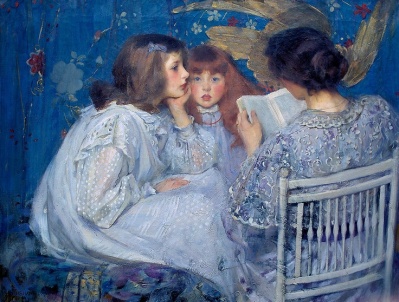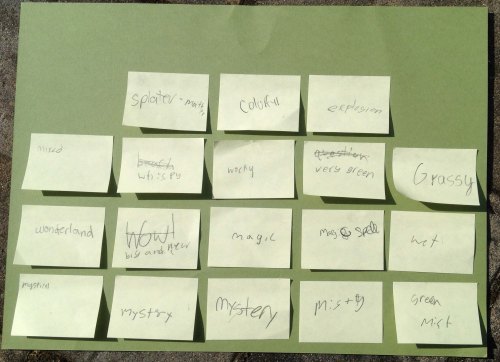Some of my most vivid childhood memories involve my mom reading aloud to me and to my older brother and sister, John and Mary. At first, it was nursery rhymes and the poems of Eugene Field and Robert Louis Stevenson. Later came Little Golden Books illustrated by Garth Williams. Once I hit elementary school, the “chapter books” (the phrase still thrills me) started: All-of-a-Kind Family by Sydney Taylor turned me into a New-York-ophile for life. Mr. Popper’s Penguins by Richard and Florence Atwater made me realize adults could be foolish dreamers, too; Caddie Woodlawn by Carol Ryrie Brink helped me weather the world as a tomboy; Young Fu of the Upper Yangtze by Elizabeth Lewis taught me how big – and small – the world was, Rifles for Watie by Harold Keith – oh, Rifles for Watie! Mom cried, I cried, everybody cried.
Bedtime – time to read the next chapter! And when the chapter was finished, it was “Sleep tight,” and then the light were turned off. I fell asleep dreaming I was a soldier spy, I was a girl dancing at a hoedown, I was riding in a Chinese junk on a yellow river half-way around the world.
Bob Bloyd, my 6th-grade teacher at Booksin Elementary School in San Jose, California, also read aloud to the class each day – usually right before we got dismissed. He sent us home with the stories of Mark Twain, Jack London and Rudyard Kipling echoing around in our heads. Since then I’ve always kept a short list of “People Who Can Read Me to Sleep” – usually well-known people whose voices appeal to me: James Earl Jones, of course; Jeremy Irons, who made the list after I listened to him read “Lolita”; Paul Auster, whose voice is smooth as butter; Seamus Heaney, with his Irish lilt; and (my personal favorite) Shelby Foote – I could listen to his soft voice forever (when you have time, take in this series of interviews of Foote talking about his childhood, especially what he says about his teachers in Video #3.)
The sound of a voice that transports you to other worlds….that’s what I wanted to give my children, and – I admit – I did it just as much for myself as for them, because I loved the way time slowed down at bedtime – there was nothing more enjoyable. And now my daughter is reading aloud each night to my grandson. He started early with books.
Now, seven years later and headed for second grade, he’s moved from picture books over to middle grade fiction. Some of the bedtime stories his mom is reading to him are old-fashioned – Half-Magic by Edward Eager, The Borrowers by Mary Norton. These older books beg to be read aloud, since quick explanations (about words and word usage) help grease the gears and keep things running smoothly. My grandson enjoyed those two books as much as he enjoyed Harry Potter, and I ‘m positive that the pleasure came from the stories being shared with his mom. I know that when I read Alice in Wonderland to my kids, we enjoyed it most because we were laughing together when the wordplay got silliest. Laughter shared with a child is so delicious.
Now the New York Times reports that the American Academy of Pediatrics is recommending that parents read aloud with their children. It’s sad to think that hasn’t been done before – what were they waiting for? But I’m not going to get crabby. I’m just going to say “Hooray! ”
For a look at the read-aloud moment with a slightly different twist, follow this link to Cody Walker’s wonderful post at The Kenyon Review, in which he talks about reading The Science Times aloud to his 7-month-old daughter.














